25
Emma Raducanu: The Girl Who Became Queen In Three Months
9 Comments · Posted by Scoop Malinowski in Bios
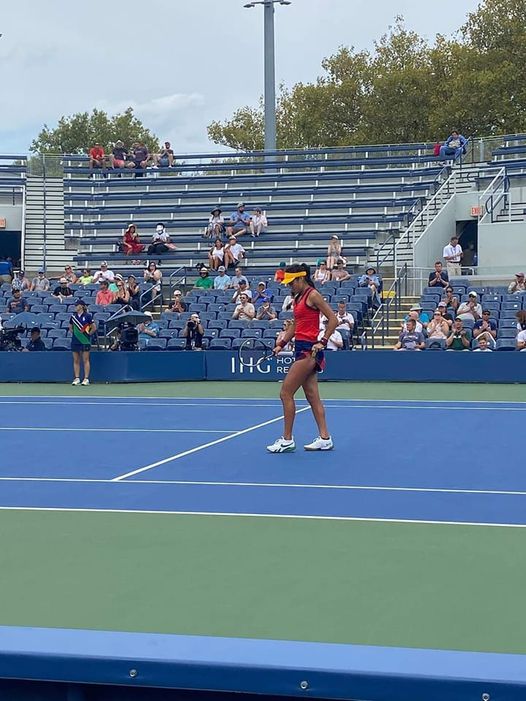
By Scoop Malinowski
(Note: This is my feature for the debut issue of FINAL Magazine in October 2021.)
A tennis player can create more than an artist and with as much satisfaction. – Maria Bueno
On the first day of Wimbledon of 2021 I had never even heard of or seen the name Emma Raducanu. The first time actually seeing her image was a couple of days into The Championships, in an Instagram photo post which did not share her name. Who is that new, young player who looks like 1980’s Hollywood starlet Phoebe Cates of the coming-of-age classic film “Fast Times At Ridgemont High”?
The realization came while watching third round Wimbledon action on TV. There she is! There’s that girl who can sell a million tickets, chocolate bars and timepieces. Emma Raducanu was playing veteran Sorana Cirstea in the third round. Immediately the match hooked me because of the frenzied energy from the crowd and witnessing how this British schoolgirl was able to viciously slug it out toe-to-toe with a very experienced, serious, tenacious, 31-year-old who has won two singles titles in her career. Cirstea was the far more accomplished player but time was against her also. Most 31-year-olds in the WTA understand they have maybe two or three years left in the WTA top 100. If that.
There is no more painful defeat for a veteran tennis professional than to be beaten by a kid, because it delivers two brutal messages: “All your experience and tricks learned in a lifetime were not enough to handle a youngster – You’re days are numbered. It’s time to start thinking about post-tennis life and let the next generation take over.”
As expected, Cirstea competed with an urgency like it could be the final third round Grand Slam duel of her career and she tried everything to subdue the ambitious wildcard Raducanu. Cirstea came out firing her best ammunition and gained control of the match for 3-1. However Raducanu was hardly convinced her maiden Wimbledon journey into the round of 32 was over, she was not intimidated by Cirstea or the magnitude of the moment. By the end it was the student Raducanu who outclassed and outsmarted the teacher Cirstea in a thrilling 63 75 but most impressive was how extrovert Raducanu was able to romance the gallery, a special skill in itself that many distinguished but introverted pros never master or even comprehend. In her first Grand Slam main draw which ended in the fourth round, Emma, so demure and feminine, showed the game and the charm to manipulate a stadium to life. Raducanu in furious action could evoke hair-raising, chill-inducing crowd roars that only certain champions can, like Andy Murray at Wimbledon, Roger Federer anywhere, and Jimmy Connors or Serena Williams at US Open.
Princess Emma upstaged herself in New York City, by miracle or destiny, this unproven, neophyte pro competitor, with only a handful of WTA level matches, won three qualifying rounds and then seven more contests in the main draw to win the US Open. She did not lose a set in ten matches, that’s twenty straight sets won. Raducanu performed her uncanny tennis brilliance with a symmetrical flair too. Her final shot of the tournament was an ace out wide in the ad court vs. Leylah Fernandez, the same exact shot she used to win her last qualifying match to earn the berth into the main draw. Suddenly, against all odds, this girl who was irrelevant in professional tennis in June is now in position to be the Face and Queen of the sport for the next decade. The bludgeoning monotony of Serena and the innocence and political activism of Naomi feel like distant memories now.
To put Emmamania into more perspective, remember, it took Andre Agassi four Grand Slam appearances in three years to get past the fourth round. Even the “God of tennis” himself Roger Federer couldn’t accomplish what Raducanu did – he lost in the first round of his Grand Slam main draw debut at Roland Garros at age 17 in 1999. Federer won his first major at 2003 Wimbledon, his 17th Grand Slam main draw appearance. Novak Djokovic reached the fourth round in his sixth Grand Slam (2006 Roland Garros) and won his first Slam at 2008 Australian Open which was his 13th major main draw appearance.
Serena Williams reached the second round of her first major at the Australian Open in 1998 when she was 16, then won the 1999 US Open, her seventh time playing a Grand Slam, at age 17. Steffi Graf lost in the first round of 1983 Australian Open and second round of 1983 Roland Garros though she was barely 14. Graf’s first Grand Slam came in her 12th attempt at 1987 Roland Garros.
Not by years but by disposition is wisdom acquired. – Plautus
Raducanu was born on November 18, 2002 in Toronto, Canada. Her father Ian is Romanian and her mother Renee is Chinese. Both parents work in the finance sector. The family moved from Ontario to Greater London in 2005 and settled in Bromley. Raducanu started tennis at age five and she said she chose to emulate two Grand Slam champions in particular – not Federer, Nadal or Serena – but Li Na of China and Simona Halep of Romania. “It’s really such a coincidence that those are two players that I try to model my game after. And I happen to have connections to both of those countries. It’s definitely helped me, the mentality that both of them bring. Both come from very hard-working countries. My mom has always instilled a lot of discipline and respect for other people into me. So I think just having parents like I do, they always push me, they have high expectations. So I’ve always tried to live up to that.”
Raducanu may not realize it but her game and athleticism reflect more than just Halep and Li Na. Her compact, efficient baseline strokes are technically, mechanically near-perfect and can generate extra weight of shot like Lindsay Davenport and Novak Djokovic. The backhand form and low leverage also reminds of Monica Seles and maybe a dash of Genie Bouchard too but with better feel, more spin and consistency. On her serve she is often open-mouthed – as if hungry for another bite – and facially similar to Marat Safin, sometimes sporting a slight twinkle of disdain in her eyes. The ‘no fear’ mindset to play the ball and not the occasion or the famed opponent, the inherent comfort on the big stage and instinctive use of emotional adrenaline and fist pumps are similar to Lleyton Hewitt and Maria Sharapova but with less aggression and intimidation intent.
Her charming personality shines both in the heat of battle and during interviews. There is not a camera in the world that doesn’t adore her. Any question she is posed, the teenager speaks with the poise, manner and eye contact of a TV professional with years of accumulated experience – not a month. It’s as if she was born to be a champion both on and off the court. I’ve watched over a dozen of her interviews and each time her comments are filled with spirit, enthusiasm, honesty, maturity and outright delight. If some players have to be forced to talk with the media, Raducanu is the polar opposite, she gives the impression she actually enjoys and is thrilled to be asked questions. Sooner than later Emma will have the entire world media eating out of her hand and asking for more. Like with Roger Federer, TV networks will send crews halfway around the planet for a two-minute interview with her.
It’s always fascinating and invigorating when a traditional sport like tennis has one of it’s doors kicked down and the new young player invites himself or herself to the party. Established players detest to give up an inch of territory to an ambitious whippersnapper. How does it happen? How does an unknown player emerge out of obscurity and suddenly, with impunity, shake up the industry?
Sometimes it can just happen with a new coach or training system. Or it can occur inexplicably, like fate designed by the tennis gods. About ten years ago I played a tournament in St. Petersburg, FL against a Floridian named Peter Haggar, now the operator of sun blinds installation business. After the match, we chatted and when asked who the best player was he ever played, he answered, “Andre Agassi at Bath & Racquet in Sarasota. It was freezing, about 25 degrees and he wore a hooded sweatshirt tied up so you could only see his eyes. He beat me 60 60 in about 24 minutes. And I used to practice a lot with Jim Courier. His mother would call my mother and ask if I could play with Jim. We were both around 14. And my mother would ask me and I would say, ‘Noooo. Courier stinks.’ Because he couldn’t beat me back then. I was beating him every time. Then all the sudden when Jim got to be 15-16 he just got soooo much better and I could never beat him again.”
John McEnroe also had a similar developmental jump as a young player. A friend of mine named Robert Kaplan, a former South Carolina University college player, player agent, coach and marketing representative for Ellesse, told me he used to play with John McEnroe starting when he was just sixteen, a couple of years before his unforgettable Wimbledon semifinal run at age 18 in 1977.
“I would play practice sets with John and I would beat him,” remembers Kaplan. “But then when he was 17 he got much better, everything, every shot he did was a 100 percent better.”
Raducanu offered insight on her sudden emergence after her third round win at the US Open, a 60 61 blowout of Spain’s Sara Sorribes Tormo, who had recently beaten the World’s No. 1 player Ashleigh Barty at the Tokyo Olympics. “I think the last year and a half really I haven’t competed much, so nothing has entirely prepared me for playing in front of many, many people. But I think that by not playing I just realize the hunger and determination to be out there… it’s definitely like once you’re out and you just want to keep going and stay as long as possible. I think it’s the desire and hunger to just stay. I’m extremely fresh. I haven’t really played on Tour for the whole entire year. This whole experience is just so new to me. I think it’s the enjoyment factor that I’m getting. I feel my game is getting better and better with each match.”
Anything that is worth doing is worth overdoing. – Oscar Wilde
Before this summer’s Wimbledon, Raducanu was an unknown ranked 338 in the world by the WTA. She was not an ITF junior superstar, her best results were quarterfinals at both 2018 Wimbledon (60 61 loss to Iga Swiatek) and US Open and her last junior Grand Slam match was a first round, straight-set loss at 2019 Australian Open to a Japanese player named Himari Sato.
At the 2018 Junior Wimbledon tournament, Raducanu defeated the American prospect named Gabriela Price 61 64 in the first round. Gabriela Price happens to be the daughter of a Florida-based friend of mine (Marc Price). Marc told me he witnessed this match and when asked for his observations, Price told me he only measured the British lass to be an okay, ordinary junior player. His words: “I remember Gabby fractured her finger on her left hand at an Octagon (management) exhibition in England the week before against Dianne Parry. Gabby fell and sprained it with a small hairline. She was going to pull out of Wimbledon and then said F it [laughs]. Gabby lost the first set just hitting one-handed slices. Second set she was up 3-love and 4-1 and then lost 6-4. Very winnable but she was one-handed. Not overly impressed by Raducanu. I thought she was a decent player, decent serve. No volleys, no slice, decent backhand. She fights hard but she’s not great. She’s okay.”
Raducanu and her team decided it was time to turn pro in early 2018 at age 15. Raducanu made the transition and won her first pro title that May, a $10,000 Women’s ITF in Tiberias, Israel, overcoming 14 degree celsius cold and older, more experienced opposition including Helene Scholsen 76 64 in the final.
In December 2019 Raducanu won the $25,000 ITF in Pune, India by beating Naiktha Bains in the final 36 61 64. After reaching the final in the Sunderland UK ITF in February 2020, Raducanu didn’t play any tournaments for nearly sixteen months (due to pandemic) until June of this year in Nottingham where another British player Harriet Dart beat her 63 64 in the first round. Just before Wimbledon there was a $100,000 ITF also in Nottingham and Raducanu won two matches there over veterans Timea Babos and Storm Sanders before losing to 2010 Wimbledon semifinalist Tsvetana Pironkova in the quarterfinal 75 76.
So the big breakout at Wimbledon this summer by Raducanu was not predicted by any tennis expert pundit that I’m aware of. We all saw Federer, Nadal, Djokovic coming, we all heard about the Williams sisters, Hingis, Kournikova, Capriati, Anisimova, Gauff. I first heard of Amanda Anisimova when she was 12 years old playing in the Eddie Herr International Championships at IMG Academy in Bradenton, FL. My friend the former Grand Slam doubles champion Daniel Vacek was there and told me all about her. Somehow those pro insiders all knew about Anisimova already.
Coco Gauff – I also saw her play in the Eddie Herr 12s and by the time she was 14 it was like a common fact she was well on her way to superstardom. But not Emma Raducanu. I’ve spent a lot of time with tennis world figures and nobody ever mentioned Emma Raducanu.
Raducanu went to regular school and was an A student. She says school and friends and a normal life running along side her tennis career helps her to not “oversaturate in tennis.” She’s the girl next door with a seemingly ordinary life outside of sport. There is no sense at all that she was a captive slave to tennis like certain other future Grand Slam champions such as the Canadian-born girl who was once told by her father, “If you lose this match you are jogging home.” She lost and had to run about 20 miles home. This player was thirteen-years-old at the time. To her credit she went on to a successful pro career highlighted by two Grand Slam singles titles. And surely Raducanu never had her father break a racquet over her leg during a substandard practice, like one American future iconic superstar endured.
Roger Federer didn’t have it easy in the beginning of his pro career. When Roger was 17 he struggled to adapt to the ATP professional level from juniors. At Miami Open in 1999 he lost to veteran journeyman Kenneth Carlsen of Denmark 75 76 and was in the midst of a period of self doubt. Steve Tignor of Tennis Magazine was working on a feature on young Federer about his career and future and a sullen Federer admitted to him, “Well, after today, I don’t even know if I have a career.”
In difficult and hopeless circumstances, the boldest plans are the safest. – Titus Livius
Nobody knows for sure which direction the career of Raducanu will turn after her wonderful debut performances at Wimbledon and US Open. It’s possible she can blossom into the next world-renowned, one-named, superstar franchise colossus. Though the recent pattern of the WTA is that the majority of teen phenoms who make the early, fancy entrances to the big stage, don’t always sustain the momentum. For every Steffi, Chrissie, Monica, Serena, Maria, there are more players who stall out and stagnate. Some even completely vanish like Melanie Oudin and Michelle Larcher de Brito who both were finished before age 24. Today Oudin coaches kids in Atlanta and Larcher de Brito works in real estate in Florida.
One of the reasons the careers of some players do not sustain is because after they win that first dream-come-true Grand Slam title and collect all the prize money and endorsement bonuses, they have instantly obtained more wealth than they ever imagined and so the tradeoff is some of the vicious, competitive drive and desire that propelled them to the top, diminishes. And tennis is a sport of fractions and centimeters and when even the great champion compromises their fire and obsession to be the best, they are no longer the same player and the results drop. “Tennis has to be life and death – or you will not stay at the top,” is how seven-time Grand Slam champion Mats Wilander described it.
Margaret Court won 24 Grand Slam singles titles, 19 in doubles and 21 more in mixed. Court won an astounding 64 total Grand Slam titles overall, a record which surely will never be broken or even threatened. She once told me her first prize for winning the 1960 Australian Open womens’ singles title “was an umbrella.”
But tennis is not all about numbers and bank accounts. It’s real value is based on passion, positive energy, joy and the pursuit of perfection. Raducanu now finds herself on the verge of making her visions reality… major championships and superstardom are within her grasp.
Six-time US Open Champion Chris Evert: “I think Emma has the best technique of the three top teenagers, Coco Gauff and Leylah Annie Fernandez. She has a picture-perfect serve, no hitches, it’s smooth, she uses her legs. Her forehand and backhand are hard enough and she has topspin to keep them in court. Her head is good. She’s hungry. There’s no glaring weaknesses. After winning the US Open she’ll have an X on her back. Everyone will want to beat Emma, everyone will want to beat the US Open champion. Hopefully she will keep her joy and passion for the game.”
Things change fast in the tennis world. Not even two years ago Raducanu was just another nameless, striving, dreamer, trying to, first of all, just make it, then make it big. Recently I had the pleasure to hit with a college player from Florida by the same of Leo Vega, a friend of a friend, and during our training I mentioned writing this feature about Raducanu and asked if he had happened to have had any chance encounters with the new “It girl” Emma Raducanu during his tennis travels. He did…
“In December 2019, I was working with a group of juniors from Winter Park preparing for the Orange Bowl,” recalled Vega. “As we arrived to Crandon Park in Key Biscayne and got two courts to practice on, I noticed a girl training on one of the courts near to us. She was incredible for her age. Smooth strokes, great footwork, mature past her years. I assumed she was already a pro player so I watched her practice while our kids warmed up. They were finishing up and I asked if she was preparing for the Orange Bowl. The coach replied that she had turned pro the year previous. I asked Emma if my players could watch her play for a few minutes and she said sure. My players and the rest of coaches watched her hit with her coach for 5-10 minutes before returning to our courts to play. I thanked her and she said you’re welcome. Emma was kind and happy to have some people praise her tennis. Then I just saw her on TV playing at Wimbledon.”

The best memories are those we have forgotten. – Alfred Capus
Throw dignity to the wind and enjoy the game. – Suzanne Lenglen
Emma Raducanu · Evian · Nike · Porsche · US Open · Wilson



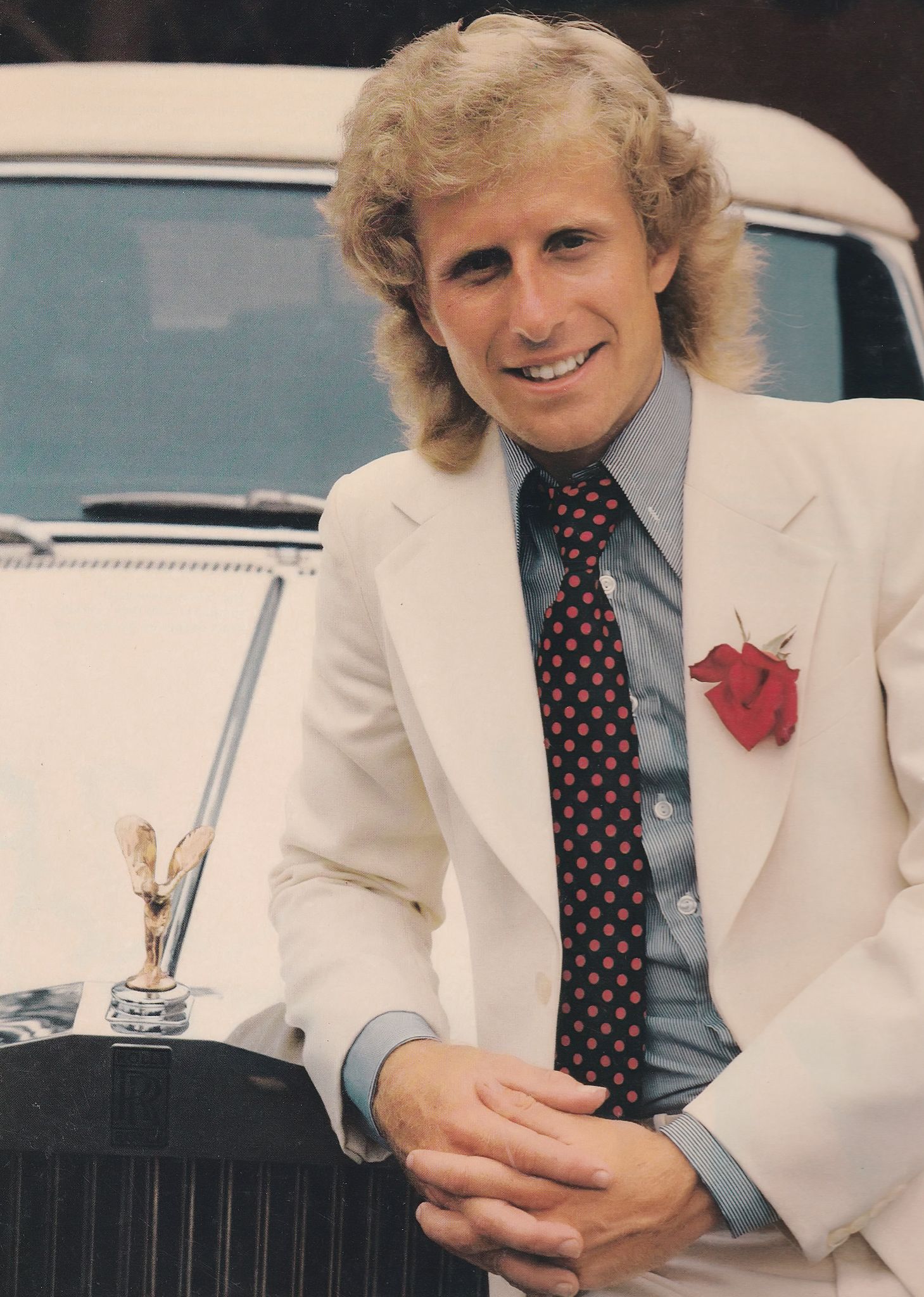
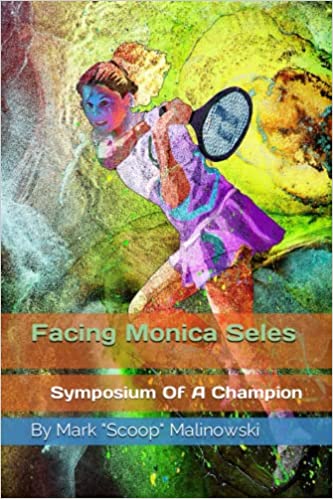
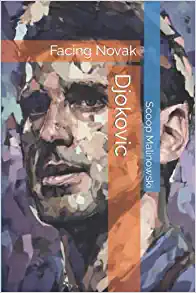
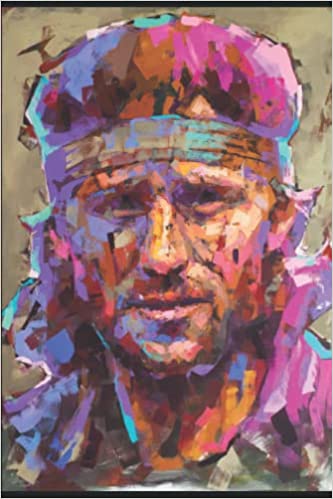
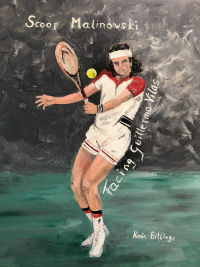
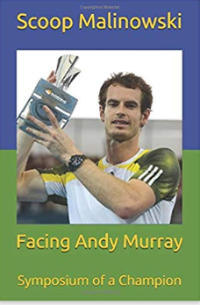
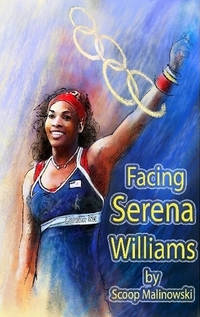
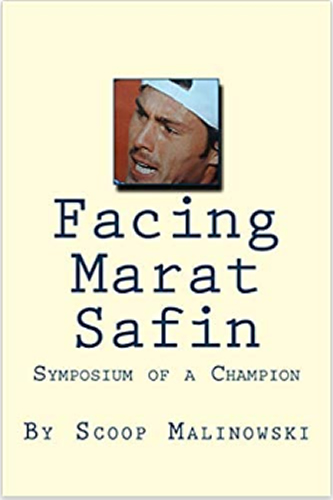
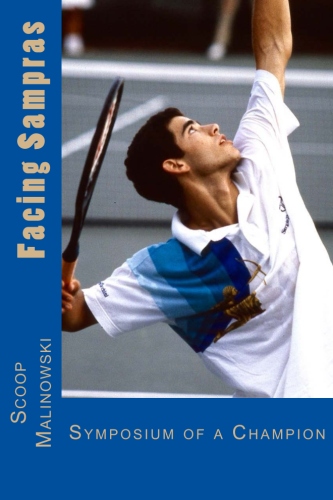
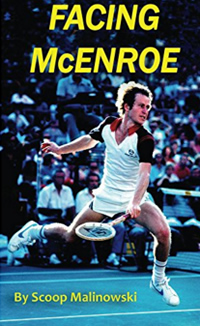
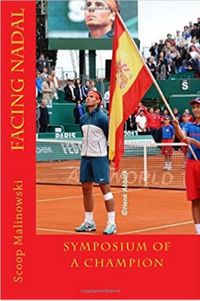
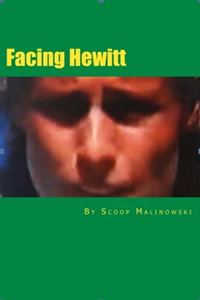
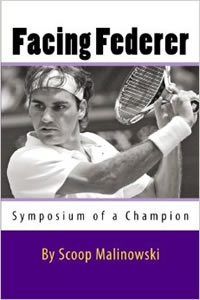
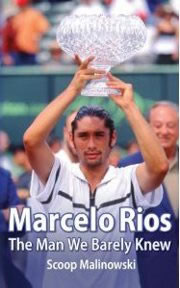

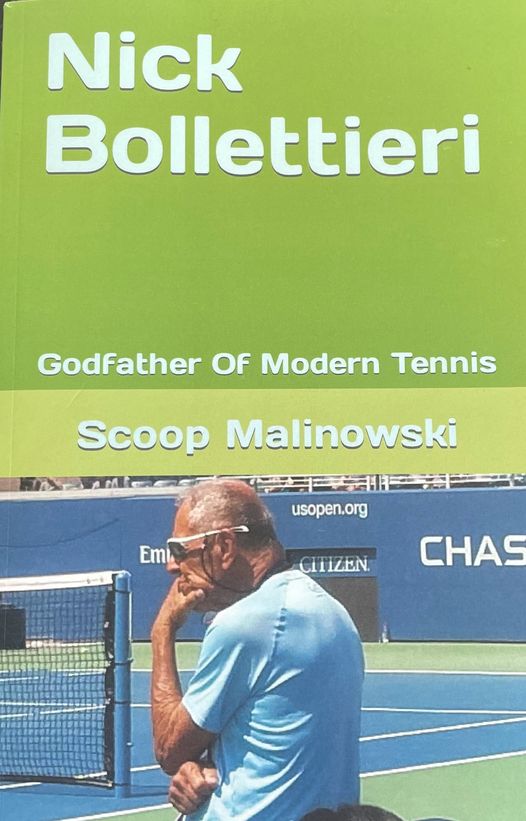

catherine · August 25, 2022 at 2:36 pm
(Emma’s R1 – Alize Cornet.)
A great weight will lift off Emma’s shoulders and fly out of her head when she loses in NY, as she must. All those expectations will be gone.
I’ll repeat Leylah’s comment here because I like it so much:
“When we do see each other crossing the halls, at practice courts, we always smile at each other, because we both know what we did was incredible.”
Leylah Fernandez on Emma Raducanu, and the 2021 US Open.
Scoop Malinowski · August 25, 2022 at 2:40 pm
Catherine, this us open is so beyond trust right now, so corrupted by the decision that was made today, would it really be a shock of they appointed the titles to Rafa and Serena?
catherine · August 25, 2022 at 3:12 pm
Scoop – I know I can’t change your mind, so I won’t try. But I’ll just say there’s going to be a lot of tennis going on in the next couple of weeks and it won’t all be corrupt.
And Serena will be celebrated, rightly, although she won’t win a title or be ‘appointed’ to one.
Scoop Malinowski · August 25, 2022 at 3:21 pm
Don’t put it past them, they just banished the greatest of all time champion, they can do anything. Obviously new sponsor moderna wanted Novak out of the draw. What if all the sponsors want Serena to win the title?
Vijay · August 26, 2022 at 7:04 pm
Why are you blaming the US Open? They wanted him there. Blame the US govt. But the real news is that tennis doesn’t feature on their radar. Maybe that’s not good news for tennis. But more important athletes in more popular sports have also been stuck in vaccine limbo across the world. Nothing special about Novak there. He made his choices. Others made theirs. World moves on.
Scoop Malinowski · August 26, 2022 at 8:38 pm
Nonsense Vijay, you’re not informed up to date. US Open made no effort to try to get Novak an exemption as they did for players the last two years. You need to stop following the fake news mainstream media. The vaccine is a failure, cdc now says there is no difference between vaxed and unvaxed. It’s a giant political charade.
Scoop Malinowski · August 27, 2022 at 7:58 am
Vijay: If us open wanted him there why did they omit Djokovic on all their posters and promotions before the tournament?
Sam · August 28, 2022 at 3:14 pm
Scoop, you big meanie!! Didn’t you know that the folks who run the U.S. Open are actually sweet, wonderful people? I mean, they love kittens and ducklings 🐈 🐣, and always go out of their way to smell beautiful tulips and daffodils. 🌸 Do you really think people like would try to keep Djokovic from winning another Grand Slam title? 😉
As for those who want to place all the blame on the U.S. government, the ATP could have decided to punish the U.S. Open just like they did Wimbledon by stripping all the ranking points or something. But did they do that?? Obviously, they’re A-OK with what’s happening. 😛
Scoop Malinowski · August 28, 2022 at 4:00 pm
Sam, US Open deleted Djokovic’s image and name from all pre tournament promotions and programs, the intention was to make sure Novak did not play. Now they are doing damage control by saying they couldn’t try to get him the exemption as they did all the players the last two years.